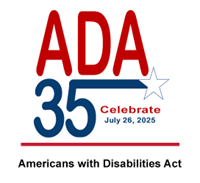The Americans with Disabilities Act at 35: A Promise in Peril

By: Matthew Dietz
Thirty-five years ago, the Americans with Disabilities Act (ADA) was signed into law, marking a historic commitment to equality and inclusion for people with disabilities. It was a promise that disabled Americans would no longer be excluded from schools, workplaces, public spaces, or civic life. It was a declaration that disability rights are civil rights.
But today, that promise is eroding.
The ADA was not born out of charity or goodwill—it was the result of relentless activism. In 1977, disability rights advocates staged a 26-day sit-in at the San Francisco federal building to demand enforcement of Section 504 of the Rehabilitation Act, the first federal law to prohibit discrimination against people with disabilities in federally funded programs. A decade later, in 1988, students at Gallaudet University—then the only university in the world designed for deaf and hard-of-hearing students—launched the “Deaf President Now” protest, demanding that the university appoint a deaf president. Their victory was a turning point in disability visibility and empowerment. These movements laid the foundation for the ADA, signed into law in 1990, which mandated civil rights protections to millions of Americans with disabilities.
Now, decades later, those protections are being quietly dismantled.
In May, the Department of Energy quietly proposed eliminating its longstanding requirement that new buildings receiving agency funds be accessible to people with disabilities. This requirement, in place across the federal government since 1980 under Section 504, ensures that public infrastructure is inclusive from the ground up. Its proposed removal is not just a bureaucratic adjustment; it is a signal that accessibility is no longer a priority, even in spaces built with public dollars.
Meanwhile, proposed federal budget cuts threaten the very services that allow people with disabilities to live independently and with dignity. Medicaid, which provides critical home and community-based services, faces reductions that could force thousands into institutional care. Cuts to the Supplemental Nutrition Assistance Program (SNAP) and HUD housing programs threaten food security and shelter for millions of disabled Americans. Funding for special education under the Individuals with Disabilities Education Act (IDEA) is also at risk, jeopardizing the future of students who rely on tailored support to succeed in school.
These policy shifts are compounded by a series of federal court decisions that have steadily narrowed the scope of civil rights enforcement. For over 40 years, people who faced discrimination from entities receiving federal financial assistance could seek damages for the emotional harm they suffered. However, in 2022, the Supreme Court ruled that individuals must prove financial or physical harm to claim damages. This change makes it much harder for people with disabilities to defend their rights unless they are willing to risk further discrimination. Discrimination often causes emotional and psychological harm, such as humiliation, anxiety, and isolation, which are not easily measured in money or physical injury.” Yet under current interpretations, those harms may go unrecognized and uncompensated, leaving victims without meaningful recourse.
Adding to this erosion is the federal government’s refusal to provide American Sign Language (ASL) interpreters at official events. This exclusion not only violates the spirit of the ADA but also sends a message that Deaf and hard-of-hearing Americans are not full participants in public life. It is a stark reminder that access is not just about ramps and elevators; it is about communication, visibility, and respect. This principle is at the heart of a recent lawsuit filed by the National Association of the Deaf (NAD) and two Deaf individuals against the Trump administration, after the White House abruptly ceased providing ASL interpreters for press briefings in January 2025. The suit demonstrates the current challenges faced by the Deaf to have meaningful language access for democratic participation.
The rollback of disability rights has also been fueled by the broader political push to eliminate Diversity, Equity, Inclusion, and Accessibility (DEIA) programs. These initiatives were designed to ensure that workplaces and institutions reflect the diversity of the communities they serve, including people with disabilities. Yet in the current climate, DEIA has been mischaracterized as “wokeness” and dismissed as a matter of preference rather than a matter of rights. This framing is not only inaccurate, it is dangerous. It ignores the legal obligation to provide reasonable accommodations and treats the needs of disabled individuals as optional.
This is especially harmful for people who live at the intersection of multiple marginalized identities. Disabled people of color, LGBTQ+ individuals with disabilities, and disabled immigrants often face compounded barriers to access, justice, and opportunity. When DEIA programs are dismantled, these communities lose vital pathways to inclusion. When accessibility is framed as a luxury rather than a right, they are pushed further to the margins.
These developments are not just legal or bureaucratic; they are deeply personal. They affect whether a Deaf student can understand a lecture, whether a wheelchair user can enter a polling place, or whether a blind person can navigate a government website. They determine whether people with disabilities are treated as full citizens or as afterthoughts.
The ADA was never a finish line. It was a starting point. And unless we act—through legislation, litigation, and public pressure—we risk breaking the promise it made to millions of Americans.













